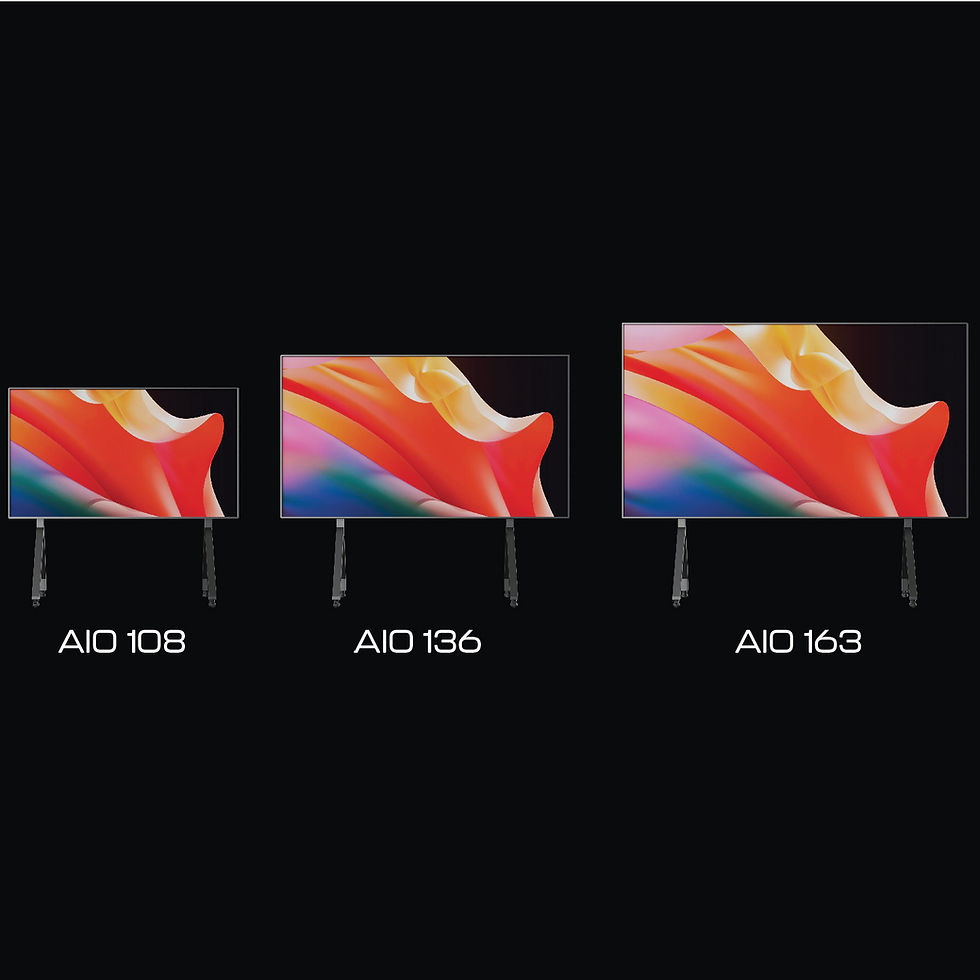Why dvLEd Viewing Distance Matters
- The K-WAV Lumenary

- Nov 13
- 3 min read
Ever Wonder Why dvLED Viewing Distance Matters?
When installing a direct view LED video wall (dvLED) in an office, large venue, or commercial environment, one of the most important — yet often overlooked — factors is viewing distance. In plain terms: how far away will your audience be when looking at the screen? That distance drives a number of critical design decisions, including pixel pitch, screen size, resolution, and ultimately impacts cost.
Here’s why it matters:
The term pixel pitch refers to the center-to-center distance between adjacent LED pixels (often noted in millimeters, e.g. Pt1.5 = 1.5 mm).
A tighter pixel pitch (smaller number) means more pixels per square meter → higher resolution → the viewer can be closer without seeing pixel structure.
If the viewer is too close and the pixel pitch is too large (i.e., pixels spaced far apart), individual LED clusters become visible, degrading the experience.
Conversely, if the viewing distance is long (i.e., the screen is in a large open space and people stand or view far away), using an ultra-fine pixel pitch may be a wasted expense — you can choose a larger pitch and still achieve acceptable image quality at a distance
“Pixel pitch directly determines pixel density — the number of pixels in a given screen area — and pixel density directly determines recommended viewing distance.” K-WAV
So, if you’re specifying or recommending dvLED video wall solutions for your clients, or your an end user yourself, you’ll want to incorporate viewing-distance logic into your consultative and/or buying process. Below we will walk through how to evaluate viewing distance, select pixel pitch and size accordingly, and show you a diagram to help in your understanding.
The Rule of Thumb & Viewing Distance Calculation
Here are a couple of the widely used rules and formulas in the industry for estimating viewing distance for dvLED walls.
The “10× rule”: Pixel pitch (in mm) × 10 ≈ minimum viewing distance (in feet) for acceptable clarity.
In metric terms: Optimal distance in meters ≈ pixel pitch (mm) × 2.5.
Here’s a quick table based on similar data
Pixel Pitch | Approx. Minimum Viewing Distance* |
1.0 mm | ~ 8-10 ft (~2.4-3.0 m) |
1.5 mm | ~ 12-15 ft (~3.6-4.6 m) |
2.5 mm | ~ 20-25 ft (~6-7.6 m) |
3.9 mm | ~ 30-40 ft (~9-12 m) |
*Please remember these are rough guidelines — actual acceptable viewing distance may vary based on content type, environment, viewer acuity, lighting and mounting height.
What to ask your client as an av integrator (or ask yourself as an end user)
What is the closest point where the viewer will stand or sit when looking at the screen?
What is the farthest point? (Especially important in large spaces, open lobbies, and auditoriums.
What kind of content will display on the wall? (Fine detail text, dashboards, imagery vs. video loop vs. simple signage).
What budget constraints exist? (Finer pixel pitch = higher cost).
What resolution is expected?
Choosing the Right dvLED Solution Based on Viewing Distance
Here’s how you incorporate these factors into solution selection:
Determine your viewing zone: Decide the minimum and typical viewing distances (closest and average).
Select pixel pitch: Use the viewing distance to find a pixel pitch that will deliver acceptable clarity without overspending. For instance:
Close-up boardroom wall (viewers ~2-3 m away) → choose a tighter pitch (e.g., P1.2-P1.5).
Retail lobby or waiting area where people stand ~5-10 m away → maybe P2.5-P3.0.
Large hall or outdoor advertising visible from far away → larger pitch acceptable (P5+).
Decide on wall size/resolution: Once pixel pitch is chosen, ensure the module count and wall size deliver the required resolution
Consider other environmental factors: Ambient light levels, mounting height (will people look up), viewing angle, traffic patterns.
Balance cost vs performance: Remember that selecting a pixel pitch finer than needed may add cost but deliver minimal visual benefit if viewers are too far away to appreciate it

Conclusions
When it comes to specifying a dvLED video wall solution, viewing distance is one of the most foundational design decisions. It directly informs pixel pitch, screen size, resolution and budget. By focusing on this early in the spec process, you ensure the solution will deliver the desired visual impact — and avoid over-investing in a pitch that is finer than the use-case justifies.
For the team at K-WAV.com — embracing this logic makes us able to be truly consultative with the clients we serve and the end-users who utilize our products daily. After all, the best video wall or dvLED display is the one that looks great from where people will actually view it — at the right price. We take all of the metrics and client needs into account when offering assistance with design & installation through our partner channels.



Comments